Last Chance to Catch NYC's Holiday Notalgia Train
We met the voices of the NYC subway on our nostalgia ride this weekend!


On January 1st, 2017, one of the urban legends of New York City finally became reality; the Second Avenue Subway started operating. First mentioned in 1919, the Second Avenue line has been the long-awaited messiah of the Upper East Side–and the over-taxed Lexington Avenue line. However, since then plans for the line have been marred with a plethora of budget cuts, delays, inopportune occurrences (wars, Great Depression, etc.), to a point that many New Yorkers, including publications like amNew York and The New York Times in 1957 were extremely skeptical, to say the least, that the line would ever open.
But, after over eighty years and more delays and postponements than we can count, the Second Avenue Subway has become reality. We definitely recommend you go and take a look at the new stations (they’re beautiful) but in the meantime here is a list of ten secrets of the Second Avenue line.

The Second Avenue subway line plan was nothing new or novel. The line was first mentioned in 1919 as part of a massive expansion of the Independent Subway System (IND). After World War I, the New York City subway experienced a surge in the number of riders, from 523 million annual riders in 1913 to 1.3 billion by 1920. The New York Public Service commission launched a study in 1919 to determine what necessary upgrades were to be made to accommodate the additional influx of riders. The study was conducted by engineer Daniel L. Turner and many of his proposals, including the Second Avenue subway line, were incorporated into plans for the new, city-owned IND.
A revised version of the plan was released by Turner in 1927, which featured a six-track Second Avenue Line that would connect to the Queens lines. The revised plan, including the Second Avenue line that would run from from Houston Street to the Harlem River was approved on September 15, 1929 with a completion date of 1938. However due to the Great Depression, the expansion costs soon made the project unaffordable. The line was shortened, and those plans were postponed numerous times too, until by 1939 the construction of the Second Avenue line was postponed indefinitely, especially after the United States entered World War II. The project ranked 14 on the Board of Transportation’s list of important transportation projects.
In 1944 Mayor LaGuardia announced that planning for the Second Avenue line had resumed, two years after the Second Avenue Elevated Line was demolished as part of the subway unification process. While an opening date of 1951 was discussed, the project was once again postponed as the Korean War commenced and inflation soared. Nevertheless the Second Avenue line was a still-talked-about topic, with new target dates set for 1957 or 1958.
Yet, as the years rolled by New York City’s financial issues, along with the more immediate problems of the existing lines caused the Second Avenue line to be pushed aside once more. The need for the Second Avenue line became more imperative in the Sixties though, as a building boom in Manhattan was underway, with much of it on the east side. Moreover, the demolition of the Third Avenue elevated line, which was supposed to be replaced by the Second Avenue line, was a stark reminder of the need for the new line.
The MTA was founded in 1965, one year after the Urban Mass Transit Act required Federal funding be made for transit projects. The MTA received $1 billion for urban transit projects in 1967, with $600 million going to the city. Invigorated with the new fund, a new Second Avenue Subway plan was proposed that would consist of one two-track line running from 34th Street to the Bronx, with a second phase running down to Water Street.
In fact, in Mad Men season 6, episode 5, titled “The Flood”, Peggy (Elisabeth Moss) voiced her concern over the value of her apartment at 84th and York, claiming that it to be too far east. To this, her realtor Ginny Hunt (Lennon Parham) responds, “When they finish the Second Avenue subway, this apartment will quadruple in value.” The episode takes place in 1968!
The first groundbreaking was done in 1972 at East 103rd Street and Second Avenue, with two subsequent groundbreaking in later years. Unfortunately, the city ran into financial woes once more, and construction stopped in 1975, with three short tunnels remaining as the remnants of the construction.
That was the end of the line for the Second Avenue Line, until the 1990s when the MTA began the Manhattan East Side Alternatives Study (MESA) with the goal of recommending a course of action to alleviate congestion and delays on the 4, 5, and 6 lines and improve mass transit accessibility for residents on the far East Side of Manhattan. In August, 1999 the MESA proposed a Second Avenue Subway line running from 96th Street to 63rd St./Lexington Ave.. Engineering design work was done between 2004 and 2006, after all approvals were made, and groundbreaking was done once on April 13th, 2007.
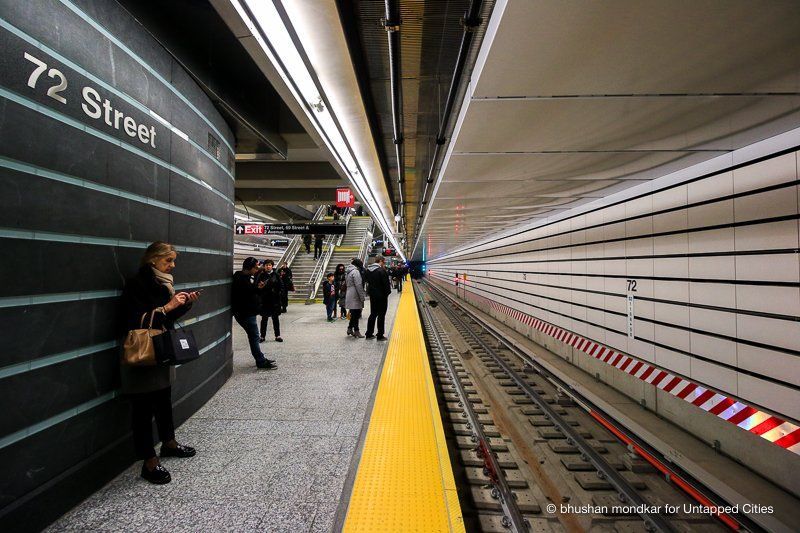
Constructing a subway line in one of the oldest, most densely populated cities in the world is inherently expensive. Add to that the conglomeration of conduits, pipes, building foundations, and various other underground infrastructures and the task is obviously quite arduous.
Yet, with a total expenditure of $4.6 billion, phase one of the Second Avenue line racked up a staggering price tag. While no one denies the significance of the line and the benefits that will be reaped, when compared to similar projects in other countries, the price tag is exorbitantly high.
To put the price into perspective, Paris recently announced a massive $25 billion plan to build 4 new metro lines, 68 stations, and over 190 kilometers of track by 2030! Hence, according to David N. Schliecher, associate professor of Law at Yale Law School, the Second Avenue subway phase I is the most expensive subway project ever built.
The MTA however, believes that such comparisons are an oversimplification. Richard Barone, Vice President of Transportation at the Regional Plan Association states that, “It’s not exactly an apple to apple comparison” and that there are other complications to consider.
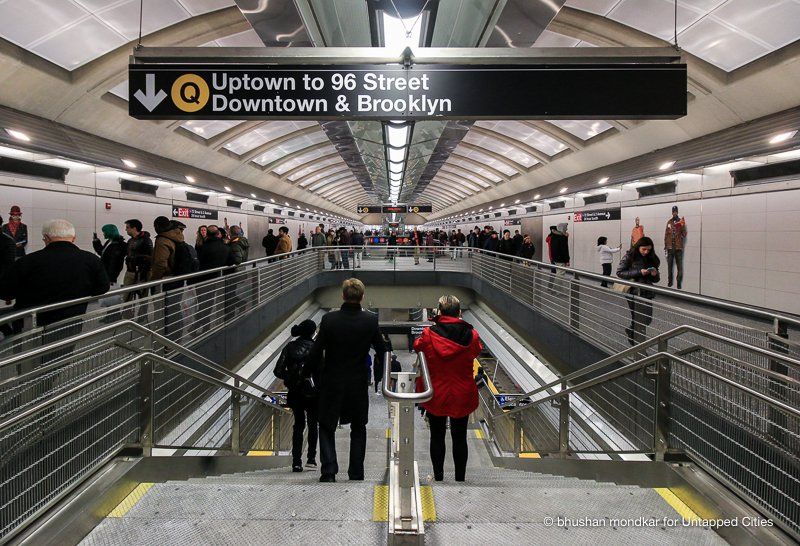
For the 113 years of the subway system’s operation grates (and faux townhouses) have been the ventilation method of choice–hence the miles of metal sidewalk grates have become a mundane, ubiquitous part of New York City streets (though it wasn’t quite as mundane in the memorable Marilyn Monroe scene with her dress billowing around her waist!). However, these familiar pieces of city streetscape do not exist along the Second Avenue Line.
The new Second Avenue stations employ mechanical ventilation towers to pump air-conditioned air in and out of the station. Gone are the whiffs of warm air in the winter months; the whooshing sound of the trains, prompting you to either hasten or to mutter an expletive at having missed your train. Though on a brighter note, gone are the fear of people walking in high-heels; the instilled wariness when you pull out your keys above a subway grate. Besides, doesn’t air-conditioned stations sound absolutely splendid? We sure think so!
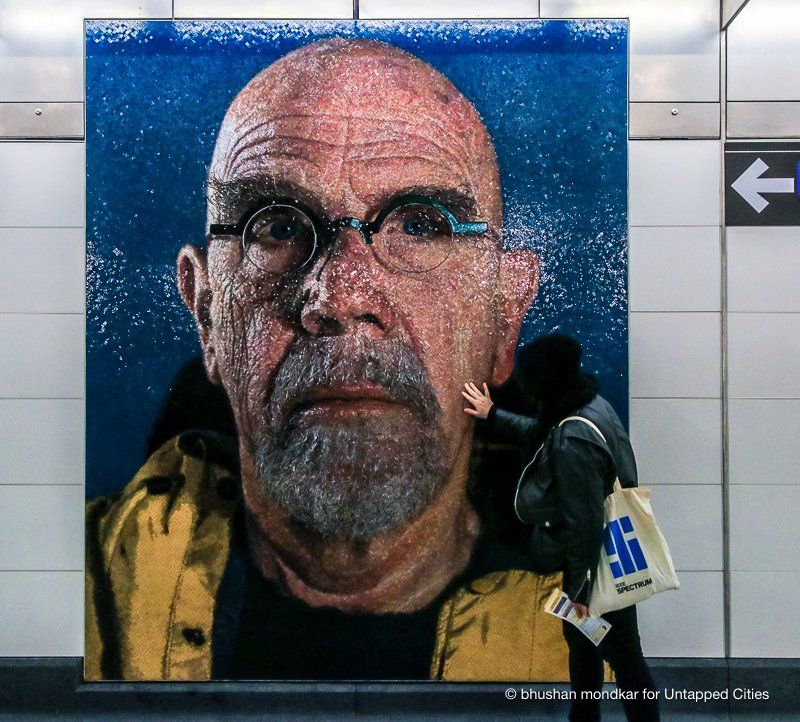
The new Second Avenue stations are some of the most modern and spacious stations in the system, with two block-long concourses and higher ceilings than the older stations. Along those lines, the art incorporated into the stations certainly lives up to the station’s standards as well. The MTA Arts and Design department, led by artist and curator Sandra Bloodworth chose four renowned artists to work on the Second Avenue Subway line, with each artist having their own campus to work on.

On the 63rd Street Station Jean Shin has displayed archival photographs from the New York Historical Society and New York Transit Museum that depict the Second Avenue elevated line being taken down. Shin’s vision is of a coexistence between contemporary urban life and images from the past–a reminder of how the city is incessantly changing.

The 96th Street station art was done by artist Sarah Sze, who’s previous work includes a sculpture for the High Line. Sze, who’s artwork is entitled “Blueprint for a Landscape,” consists of blue images of blowing paper and other artifacts swirling around visitors, as they pass through approximately 14,000 square feet of porcelain wall tiles.

The 86th Street subway station features twelve large-scale mosaic portraits created by artist Chuck Close. Named “Subway Portraits,” the artwork includes mosaics of some of New York’s most prominent residences, such as Philip Glass, Cindy Sherman, Lou Reed, and more. There are also self-portraits of the artist himself.
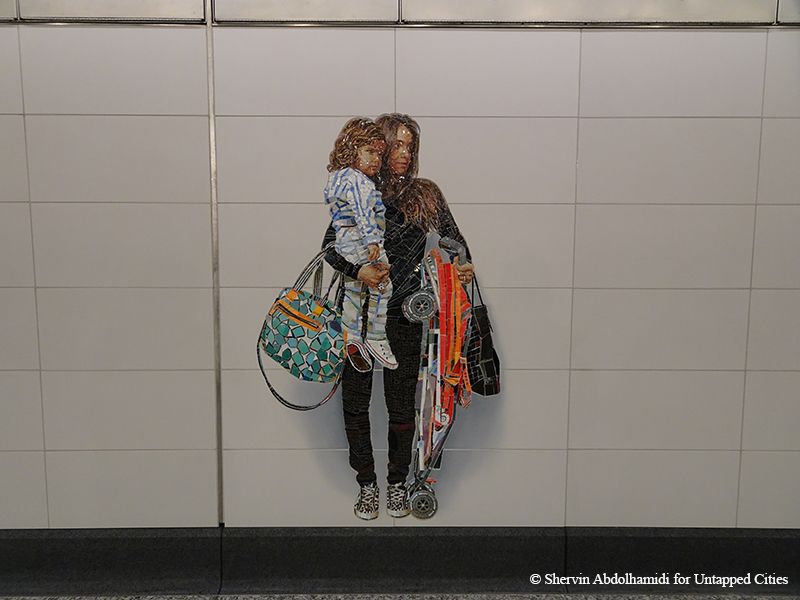
“Perfect Strangers” is a series of thirty-six life-size portraits that depict New Yorkers–and tourists–waiting for a train. Created by Brazilian artist Vic Muniz, the artwork depicts the lives of various individuals through vivid, evocative images that conjure up notions of the people’s lives. The piece is a celebration of diversity, with the portraits illustrating individuals from all walks of life, including a single-mom, a Sikh businessman, and a gay couple holding hands.

In April 2007 the New York Times ran a story about designer’s proposal to include a floor-to-ceiling glass barrier and doors in the new subway stations. The glass barriers would have completely sealed off the tracks, only opening when the trains doors opened. Gone would be the swooshing gust of wind as the trains go barreling down the platform.
The platform edge doors, as they are called, are used in many subway systems around the world, and provide numerous benefits. In addition to the obvious safety and hygienic benefits (no more trash on the tracks!), the doors provide substantial energy saving when it comes to keeping the stations cool. The heat from the tunnels would be partially blocked by the glass.
The proposal was originally rejected by Lawrence G. Reuter, president of New York City Transit from 1996 to 2007. Mr. Reuter mentioned retrofitting the entire subway system with doors was considered in the 1980s and again in the 1990s. However, both times it was rejected due to the complications of integrating such a vast addition into the system. After Reuter’s departure, the doors were reconsidered, but ultimately scrapped due to the additional cost it would entail–and also due to long-term maintenance concerns.
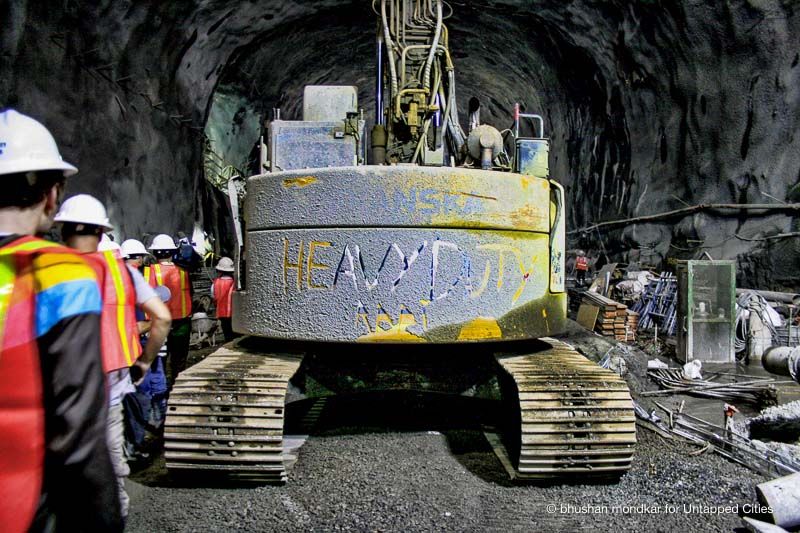
New York can be a romantic place, with plenty of cute places to pop the question; there’s Times Square, Central Park, the top of the Empire State Building (Sleepless in Seattle anyone?), inside an unfinished Second Avenue subway tunnel….? Yes! On May 18, 2014 urban planner Adam Meagher proposed to his girlfriend amid the subway tunnels, some 100 feet below the Upper East Side apartment where his girlfriend at the time, Carolyn Grossman, had grown up.
The couple are both infrastructure and transit buffs and so, while on a community tour of the 86th Street station, Meagher dropped to one knee and proposed with the line, “Just like the Second Avenue subway has taken a long time, I’ve also been waiting a long time. Will you marry me?” Grossman said yes and he sealed the deal with a vintage 1920s diamond platinum ring, made around the time of the first Second Avenue Line “Proposal”.
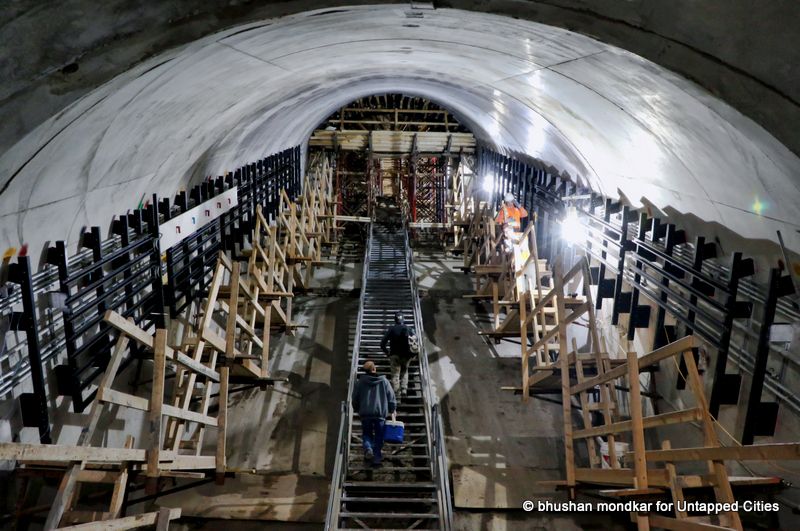
The ceremonious groundbreaking of the Second Avenue line was done back in April 12, 2007, and while groundbreakings are supposed to symbolize the initiation of a project, in the case of the Second Avenue line it was a bit of a déjà vu. The first groundbreaking for the line was held on October 27, 1972 by Governor Nelson Rockefeller and Mayor Lindsay at the 103rd Street and Second Avenue block.
Two other groundbreakings were made in the subsequent years, in what was a period of activities on the Second Avenue subway which saw three segments of tunnel being built, before the city’s fiscal woes caused it to abandon construction. In 1973 groundbreaking was held at Canal Street and Bowery, which marked the construction on the southern side of the line; a segment of tunnel was built between groundbreaking and Chatham Square in Chinatown.
Finally, in the summer of 1974 the third groundbreaking for the Second Avenue line was held at Second Avenue and Second Street with now Mayor Abraham Beame. This was the most poignant of all groundbreakings, since no section of tunnel was ever built there.
And so, construction ended in 1975 with only three tunnels as remnants of the groundbreaking and constructions. The tunnels are between Canal Street and Chatham Square, 99th and 105th, and 110th and 120th Streets.
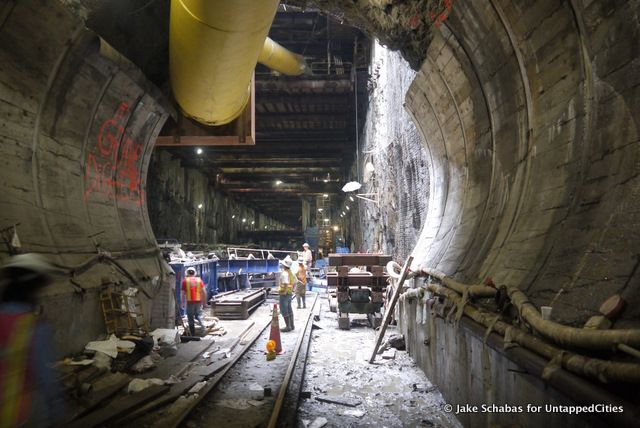
Constructing subways are herculean mega projects that involve digging through miles of city bedrock while keeping the foundations of the building above intact. In order to accomplish this the MTA (and construction companies around the world) have been utilizing state-of-the-art tunnel boring machines (TBM) that can dig through bedrock at a remarkable pace while causing minimal disturbances on the grounds surrounding the tunnel.
During the past years, a fleet of seven behemoth TBMs have been excavating tunnels for both the new Second Avenue line, East Side Access, and other transit projects. These gargantuan machines excavate tunnels using the sharp, tungsten carbide shears of the cutting head. The excavated material from the tunnels is then sent back via a belt conveyor. Next, the TBM pushes forward and segments of concrete are placed on the walls of the newly excavated tunnel. The equipment for the machine extends the length of a few city blocks in the back.
The machines also have their own distinct names that have interesting origins. Adi, named after the granddaughter of Michael Horodniceanu, the agency’s president of capital construction, was refurbished and shipped to Indianapolis after it finished work on the Second Avenue line in September of 2011. Weighing 485 tons with a 200-ton cutting head, Adi is the machine that mined almost 15,000 feet of the new line, from 92nd Street to 63rd Street, at a rate of 50 feet per day.
The tons of muddy crushed rock that is created by digging, known as muck, has been put to good use. The muck has been used as foundations for new college dorms in Jersey City, stables soil under a golf course, and a fill that created parts of Brooklyn Bridge Park!
Construction workers are multi-faceted people who come from all walks of life, and the Second Avenue construction team had a very musically talented one. Gary Russo was a former ironworker who helped build the Second Avenue Subway in 2011. Russo gained notoriety when for days in the stifling heat of August he would haul his Karaoke gear to work and belt out Frank Sinatra and Bobby Darin tunes during his 30-minute lunch break. Russo would perform for his coworkers and lucky passersby in front of a sign that said, “Forget all the noise, traffic and impact of the 2nd Ave. Subway. Enjoy the music.” His lunchtime performances soon earned him the title of the “Second Avenue Sinatra”.
Unfortunately, Gary Russo was found dead in late August of 2015, after having gone missing for a month. In what appeared to be suicide, the Sinatra singer’s body was found dangling from a rope on a tree less than a mile from his Queens apartment. Russo had reportedly been blue after a breakup with a girlfriend.
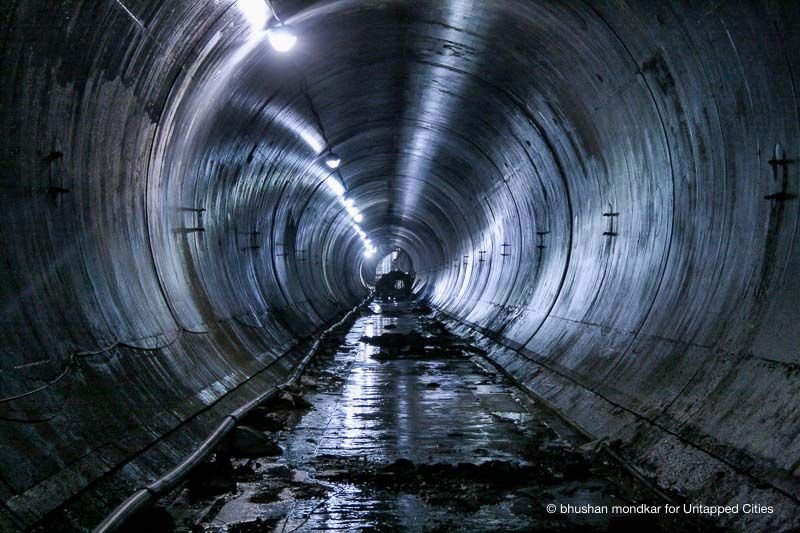
During the construction phase of the subway line Upper East Side residence living along the second avenue started to complain about a nagging, protracted coughing. The chronic coughs is believed to have been due the blasting that took take place at the construction sites, and the subsequent plumes of dust that would permeate through the air.
In response to complaints by residence, the MTA conducted an air quality test by proxy of the firm Parsons Brinckerhoff back in Sept. of 2011. The study concluded that the Second Avenue posed no threat to the public’s health, stating that, “There are no chronic or acute health problems associated with the odor thresholds” that many residence were complaining about.
Despite the results of the study, many residence continued to attribute their recent chronic coughs and congestion to subway line, remarking on how the advent of their ailment coincided with the construction, thus dubbing the condition “The Second Avenue Cough.”
Next, check out photos of the construction of the Second Avenue Subway over the years.
Subscribe to our newsletter